Potosi, Sucre & El Choro Trek
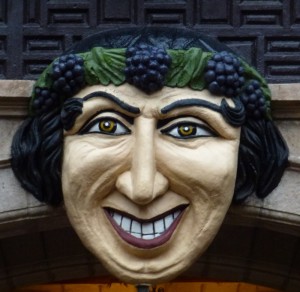 Casa de Moneda |
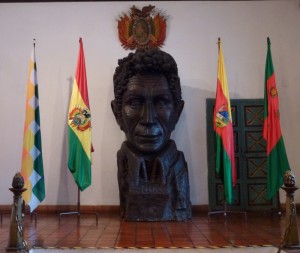 Simon Bolivar, Casa de la Libertad |
February 1 Saturday: Uyuni – Potosi (4067m) (219km) We travelled on a tourist bus to Potosi. While packing, I realized my green jacket was missing. I asked Pepe to call Hector as I knew it was lying on the back seat. Hector found and brought it back before we boarded the bus at 9:30am.
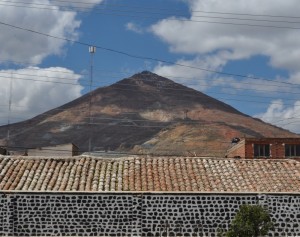
Cerro Rico
The story of Potosi founded in 1545 is wholly tied to silver. Cerro Rico a ‘Rich Hill’ full of silver which had bankrolled the Spanish empire looms behind the city. It was regarded as the world’s largest industrial complex of the time. It has many remarkable colonial public and residential architecture. The 4-hour journey was smooth as the road between Potosi and Uyuni is well-paved. The scenery through the mountainous region is impressive. Potosi is one of the world’s highest cities at 4,000m with a population of about 150,000. We had a lovely set lunch for B$45 at Restaurante Empedradillo. The soup called khala purka is a local specialty with a hot stone placed in the bowl. After lunch, Ross, Nicky, Jan and I went to Casa Nacional de la Moneda. Constructed between 1753 and 1773 to control the minting of colonial coins, the building is enormous with some 180 rooms and the architecture and exhibits are fantastic. When we finished the guided tour at 6pm. It was still raining and we walked back to the hotel. I was full and did not go out for dinner.
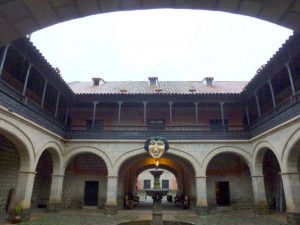 |
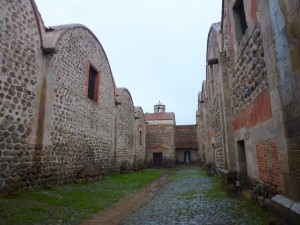 |
February 2 Sunday: Potosi I did not join a tour to the mine as I do not fantasy walking and crawling through narrow tunnels underground. As it was Sunday, the town was empty and all attractions including the Cathedral were closed. I strolled along the narrow streets looking at colonial architectures.
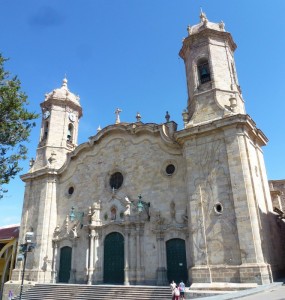 Iglesia Catedral |
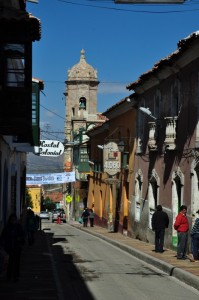 |
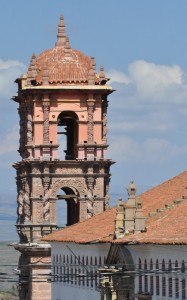 Torres de la Compania de Jesus |
I went into two churches (San Pedro and San Martin) while they were holding the Sunday Mass (otherwise they are all closed).
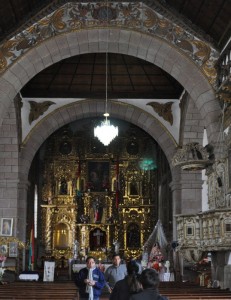 Iglesia San Martin |
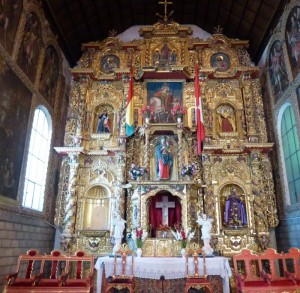 |
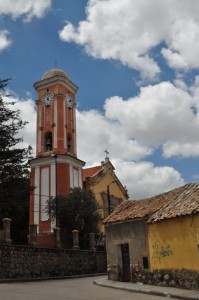 Iglesia San Juan Bautista |
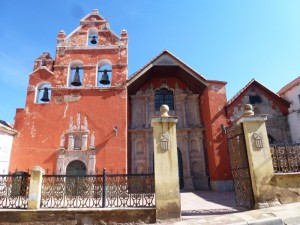 Iglesia La Merced |
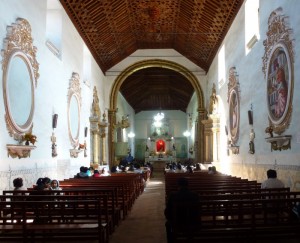 |
The Plaze 10 de Noviembre is lovely. I had a set lunch in a local café for B$18.
The weather turned horrible in the afternoon. I hurried back to the hotel. As a result, I missed the opportunity to watch a hailstorm which hit the city. When I went with the group to La Taverna for dinner, I still found melting snow on the streets and roof-tops.
February 3 Monday: Potosi – Sucre (2710m) (162km)
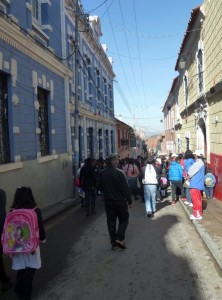 |
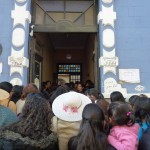 Anxious parents sending children to school on the first day after summer holiday |
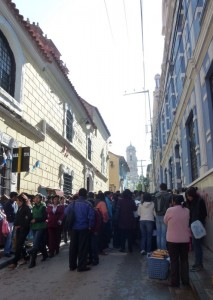 |
Before leaving Potosi, Pepe arranged a visit to Museo & Convento San Teresa. The guided tour was enjoyable as we had a remarkable guide, Lydia who is funny and explains the history and architecture of the convent founded by a nun of the Carmen order from Peru in 1691. This convent is beautiful and the exhibits are exquisite and well-preserved. We should have spent more time in the museum as the bus was as usual late. We did not leave the hotel till 10:45am.
The journey took three and a half hours. We gradually descended from over 4,000m to 2,600m travelling on winding roads with beautiful views of gorges, valleys and villages. We arrived at Hostal Sucre at 2:15pm.
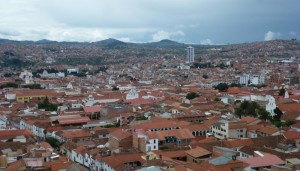 Sucre founded in 1538 is the constitutional capital of Bolivia and a World Heritage Site. The city nicknamed ‘the white city’ has been known as Charcas (an indigenous name), La Plata and Chuquisaca (during the independence era). Sucre has retained many of its 16th century religious buildings showing the fusion of local and European architectural styles. We had a lovely lunch and began our 3-hour walking tour at Plaza 25 de Mayo where the fight for independence began. In the middle of the plaza stands Símon Bolivár who led the independence movement in the continent.
Sucre founded in 1538 is the constitutional capital of Bolivia and a World Heritage Site. The city nicknamed ‘the white city’ has been known as Charcas (an indigenous name), La Plata and Chuquisaca (during the independence era). Sucre has retained many of its 16th century religious buildings showing the fusion of local and European architectural styles. We had a lovely lunch and began our 3-hour walking tour at Plaza 25 de Mayo where the fight for independence began. In the middle of the plaza stands Símon Bolivár who led the independence movement in the continent.
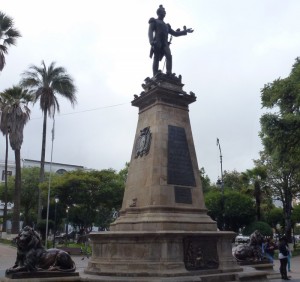 Plaza 25 de Mayo |
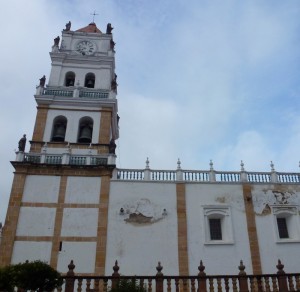 Catedral |
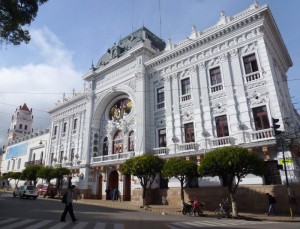 Prefectura de Chuquisaca |
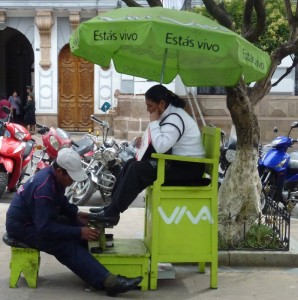 |
We walked along Calle Bustillo and reached the cemetery at the end of the road. A local guide took us to see several graves including the family grave of Arce-Alvarez (a former president), Franciso Argandoña (a rich banker), Gregorio Pacheco (a former president), Manuel Asencio Padilla and his wife.
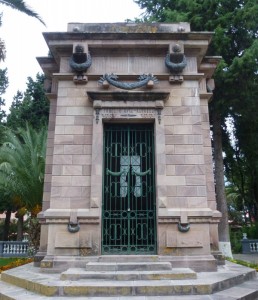 Family grave of Arce-Alvarez |
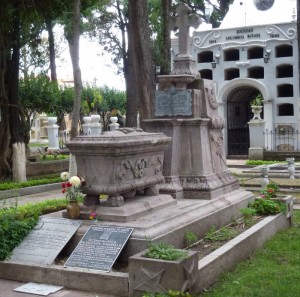 Manuel Asencio Padilla and wife |
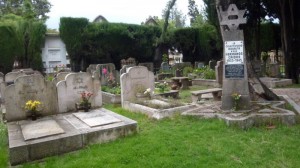 |
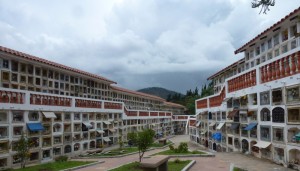 |
Then we walked to Parque Bolivar before arriving at Mercado Central. The streets were lively filled with locals. We ended a great day with an excellent meal at La Taverna.
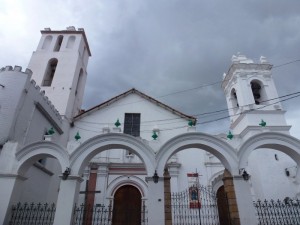 Iglesia San Francisco |
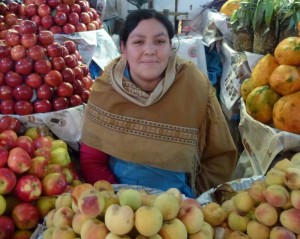 |
February 4 Tuesday: Sucre It was a free day. Pepe took Nick, Jan, Ross and I to visit Castillo de la Glorieta, an eclectic castle built by Franciso Argandoña and his wife Clotilde Urioste during the late 19th century. The couple received an honorary title of Prince and Princess of La Glorieta from Pope Leon XIII in December 1898 and had travelled widely in Europe. They built their castle incorporating Russian, Arabic, Dutch, and French and Italian architectural styles. The castle has three towers, some 40 rooms and a garden. But the whole place lacks proper care.
We took a public minibus back to the city centre and visited Casa de la Libertad which is housed in a well restored and maintained convent from the colonial era. The chapel was the meeting hall where Bolivian independence was declared on 25 May 1825. The museum includes a number of paintings and objects related to Bolivian history, especially to the independence movement and the struggles breaking away from Spanish domination.
We walked uphill to Mirador Recoleta and had lunch. Then we spent over an hour in the Indigenous Art Museum which displays magnificent pieces of art mainly in the form of textiles.
The last museum I visited today was the Museo de Etnografia y Folklore where I saw 54 exquisite masks which are worn during festivals.
In the evening, we went to see a show with dinner for only B$140. There were 15 dancers who performed non-stop for an hour and a half. The music is too loud but I appreciate the efforts made by the enthusiastic artists. I hope they have a decent salary. February 5 Wednesday: Sucre – La Paz (714 km) I got up early and had a nice stroll in the city before breakfast.
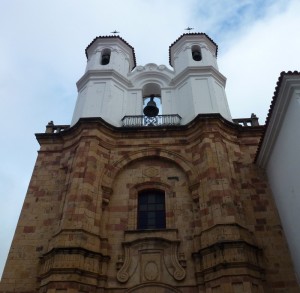 Iglesia San Felipe Neri |
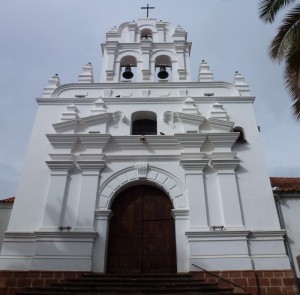 Iglesia Santa Clara |
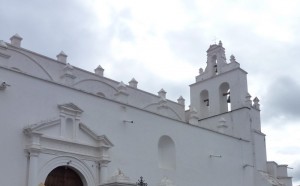 Iglesia La Merced |
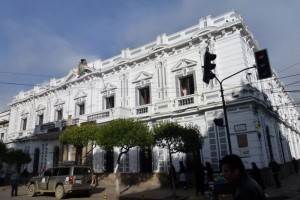 |
At 9am, we departed by taxi to the airport. Our plane took off before 11am making a stop in Cochabamba before flying to La Paz. We landed around 1:30pm and were back in Eva Palace Hotel after 2pm. I fixed up two trekking tours starting February 7 and a couple of Spanish lessons. At 8:30pm I joined the group for a farewell dinner at the Steak House. I had a 300-gram steak, a beer and a tea. The dinner only cost me B$126! I caught a cold and had a running nose the whole day. It got worse during dinner and I could not stop sneezing and yarning. I returned to the hotel to rest while others went clubbing. The organized tour formally ended and I said good-bye to Pepe. February 6 Thursday: La Paz – End of 12-day trip I felt better after a good sleep. Unfortunately, I had to get up early to take my Spanish lesson at 8am. I wasted no time and tried to finish my travel notes as I would be off the following day on the 3-day trek. In the evening, I joined Sarah and Trent for dinner. We had nice Thai food and I said good-bye to this nice young newly-wed couple. February 7-9 Friday – Sunday: 3-day El Choro Trek (about 31km) Day 1: I had a private trek which cost me only B$800. My guide is Mario who speaks no English. We took a mirco to a bus terminal and took another minibus. After some 40-minute drive, we got off at 10:45am near the starting point of a 70-km trek which follows the river valley of Rio Chunckora.
The weather was bad and misty. I had a vague impression of the landscape as lakes and mountains all disappeared in the thick mist. After a gentle climb, I reached the La Cumbre (the summit at 5100m) at noon. Light snowflakes started to fall upon me. At the summit, I saw a herd of llamas and some indigenous people.
From here, it is a 4-6 hour downhill walk to Challapampa where there is a camping site with facilities. The trail is good and should be picturesque on a nice day. Unfortunately, it started to rain and I could not see beyond 20m. I used a walking pole which helped a lot. When I reached Chuora, a small settlement with some 30 inhabitants around 4pm, I decided not to go on as my boots were wet and my feet sore. (I made the right decision as it continued to rain for the next two hours. The stony path down to Challapampa would be too wet and slippery for me).
The weather improved at sunset. I went out for a short walk and saw an iron bridge. I took a few photos of the village from the other side of the river. Mario set up my tent in a community centre and prepared a soup and pasta for dinner. I had a decent meal and went to bed before 8pm. It was cold and I slept badly.
Day 2: I woke up at 5am as Mario knocked on the door (I locked it as Mario had advised me to do so). He came in to use the gas stove to boil water for tea and cook rice and beef for lunch. The weather was cloudy when we set off at 7am. I was very slow as I found the stony path slippery.
At Challapampa (4400m), we crossed the river and had a brief stop. It was after 9:15am when we began our uphill hike.
It is a fairly long walk to the next point where we had lunch shortly after noon. We met four young Boliviano trekkers who planned to arrive in Chiaro the same day.
It started to rain. My boots and socks were soaking wet and my soles had already turned white. But there was nothing I could do but to continue with the trek! We crossed a second bridge (back to the same side as we started in the morning) and began an uphill hike.
We followed an easy and fairly levelled path leading us into another river valley. We walked up and then down before crossing the third bridge of the day. My feet were so sore that I walked with great pain. I walked uphill again for another hour. Finally I reached San Francisco, the campsite for the night. I fell four times with dozens of near falls! Mario was always ahead of me and was oblivious of my accidents. Luckily I managed to get up each time. Mario said I had done about 15km.
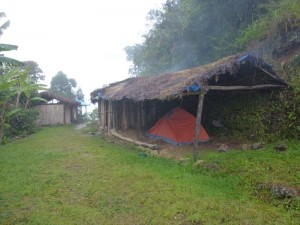 My tent under a thatched roof |
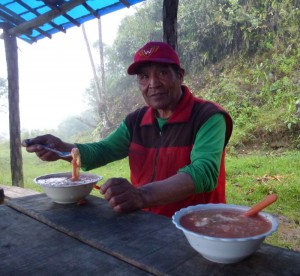 |
There is hardly anything here: a couple of roofed-mud houses. Mario got a key to open one of them where he cooked and slept. As for me, he set up a tent under a thatched roof. The rain almost stopped when we had tea around 5:30pm. He prepared a soup with rice, potatoes and tomatoes for supper. There was nothing to do and I went to sleep once it got dark. It rained the whole night. I was glad that I had a roof over my tent. Even so, my tent was wet in the morning from the dew and humidity. It was not cold and I had a fairly good sleep.
Day 3: I got up at 5am and had tea and bread for breakfast. We set off just before 7am. By now I knew it would rain around noon and hoped to go as fast as possible when the weather was fine.
The sun came out miraculously for a couple of hours. The path is not difficult but has got very muddy and unpleasant after days of heavy rainfall.
During the 9-km trek, I only saw a couple of families and a nice campsite with proper accommodation run by a Japanese. Today, Mario was more attentive and tried to walk behind me. I had two bad falls and Mario had to pull me up. My feet got worse and I took each step with pain. Mario noticed my struggle and offered to carry my backpack. I deeply appreciate his help.
When we were about two kilometres from Chairo, I could no longer bear to have my boots on. Against Mario’s advice, I took off my boots and put on my light beachwear (which is more like a slipper). I put my thick pair of woolly socks over my feet. I felt better and walked more steadily and faster.
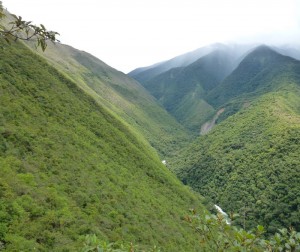 Finally we arrived at Chairo at 2pm and the rained stopped. I brought Mario lunch and had to pay B$150 for a private car to take us to Corocio where we got a minibus to La Paz. I had the best views of the river valley and the mountains from Corocio. We left at 5pm and were back in La Paz at 8pm.
Finally we arrived at Chairo at 2pm and the rained stopped. I brought Mario lunch and had to pay B$150 for a private car to take us to Corocio where we got a minibus to La Paz. I had the best views of the river valley and the mountains from Corocio. We left at 5pm and were back in La Paz at 8pm.
Remarks: This is a short but the worst trek I have had in my life. It is not a difficult trek at all if the weather is fine. But given the problems of my knees and feet, and my difficulty in walking downhill especially on a stony slippery path, I did not enjoy the trek at all. Luckily, I have not broken my neck, arms and legs though I have hurt my knees. On reflection, the agent should have checked the weather forecast and cancelled the trek!



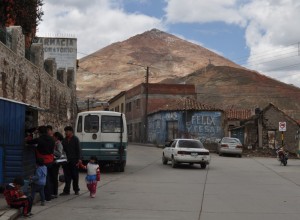
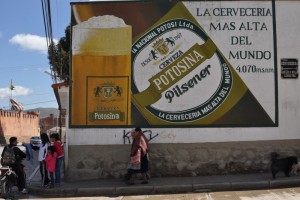
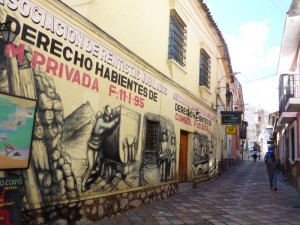
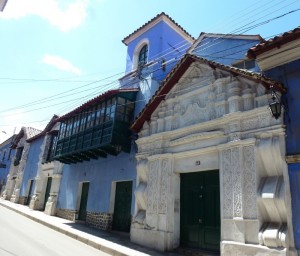


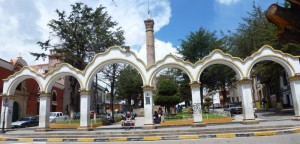
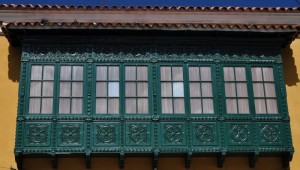
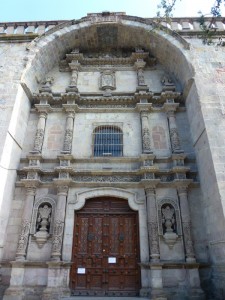
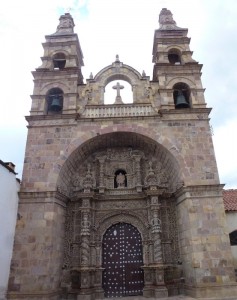
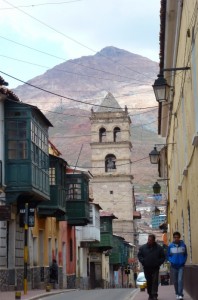
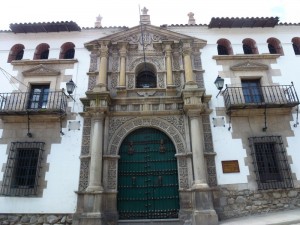
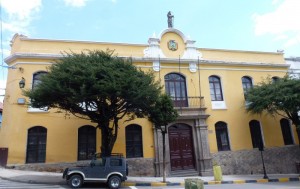
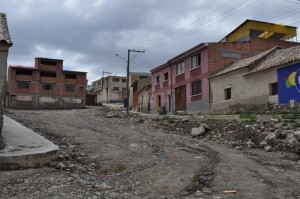
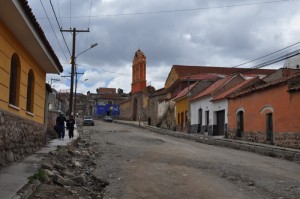
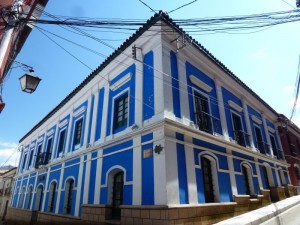
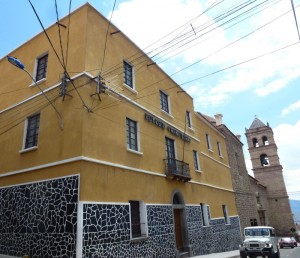


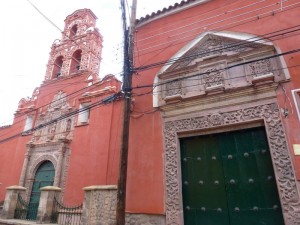
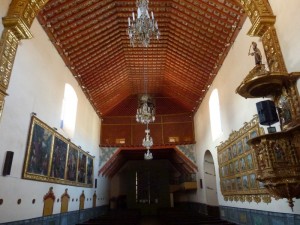
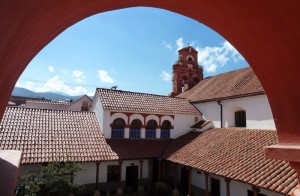
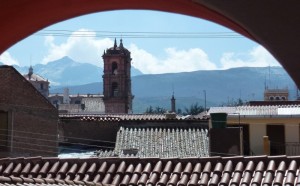
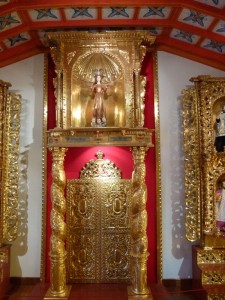
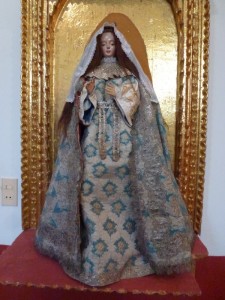
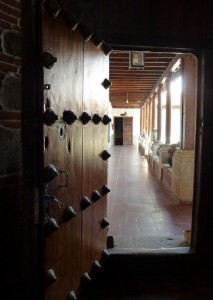
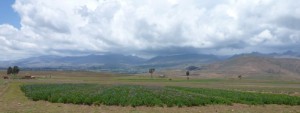
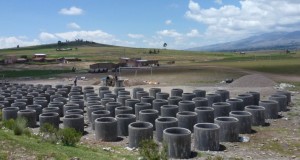
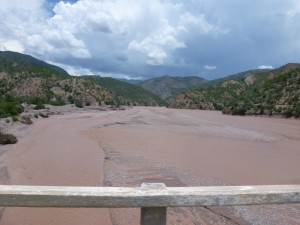
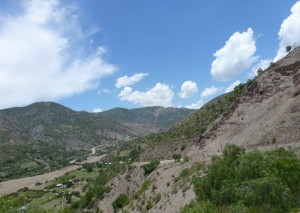
 Sucre founded in 1538 is the constitutional capital of Bolivia and a World Heritage Site. The city nicknamed ‘the white city’ has been known as Charcas (an indigenous name), La Plata and Chuquisaca (during the independence era). Sucre has retained many of its 16th century religious buildings showing the fusion of local and European architectural styles. We had a lovely lunch and began our 3-hour walking tour at Plaza 25 de Mayo where the fight for independence began. In the middle of the plaza stands Símon Bolivár who led the independence movement in the continent.
Sucre founded in 1538 is the constitutional capital of Bolivia and a World Heritage Site. The city nicknamed ‘the white city’ has been known as Charcas (an indigenous name), La Plata and Chuquisaca (during the independence era). Sucre has retained many of its 16th century religious buildings showing the fusion of local and European architectural styles. We had a lovely lunch and began our 3-hour walking tour at Plaza 25 de Mayo where the fight for independence began. In the middle of the plaza stands Símon Bolivár who led the independence movement in the continent.



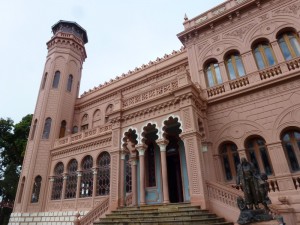
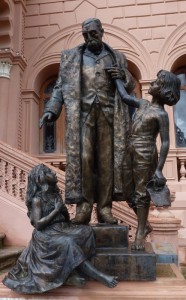
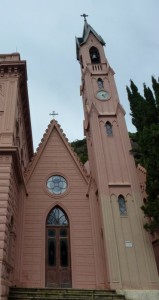
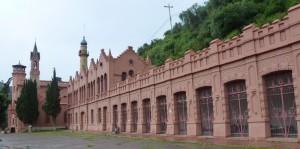
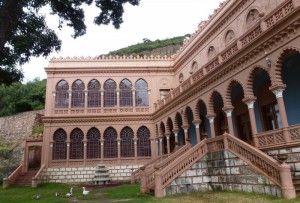
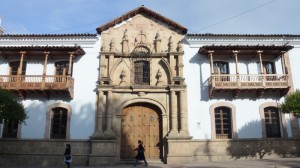
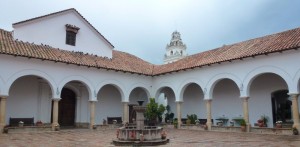
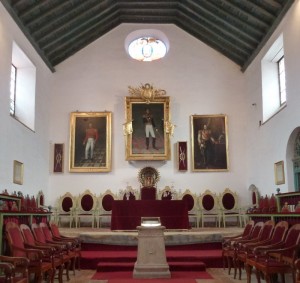
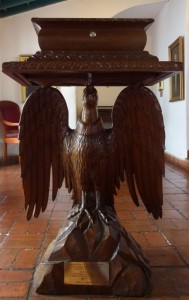
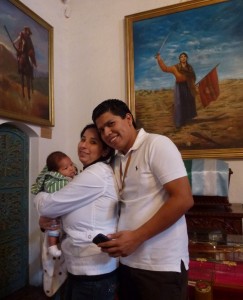
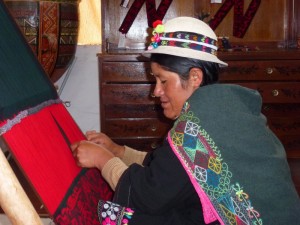
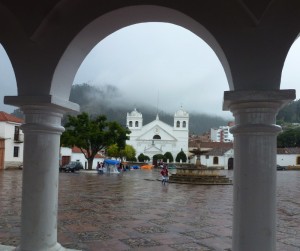
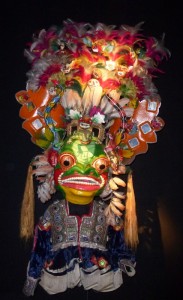
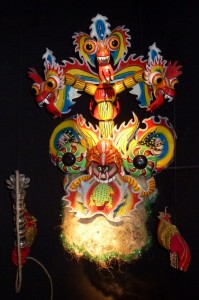

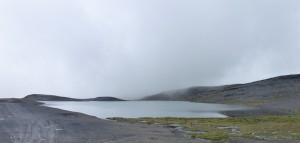
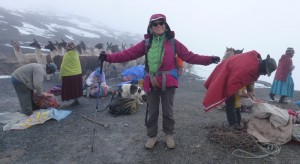
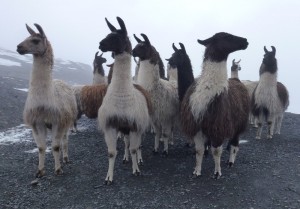
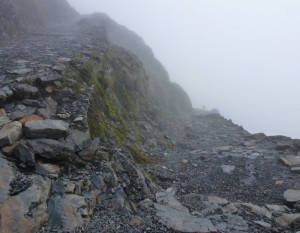
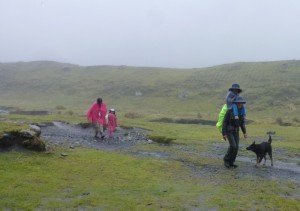
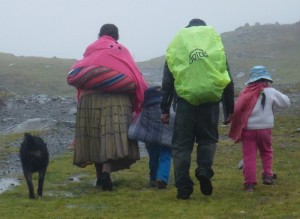
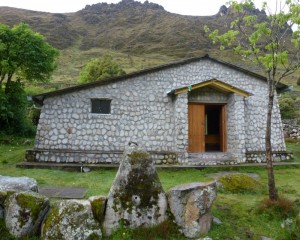
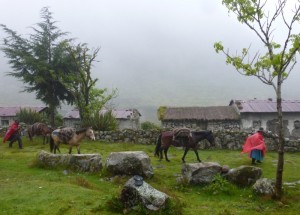
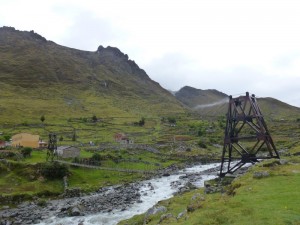
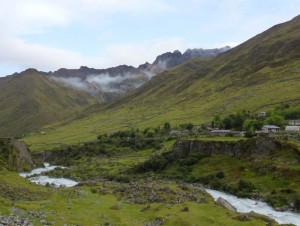
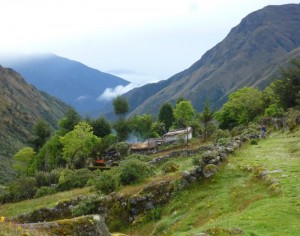
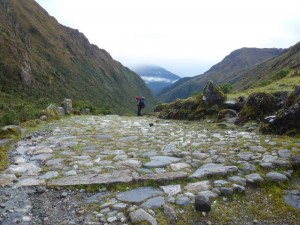
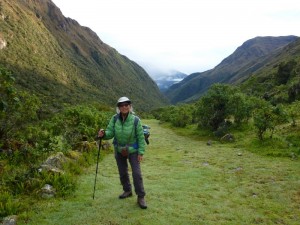
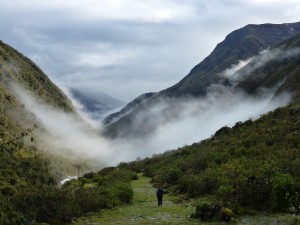
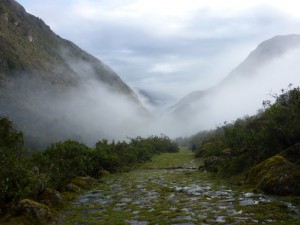
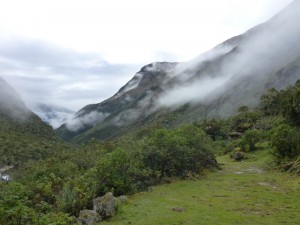
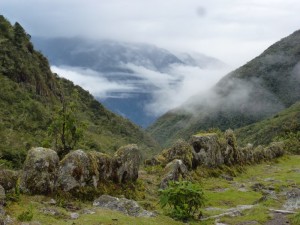
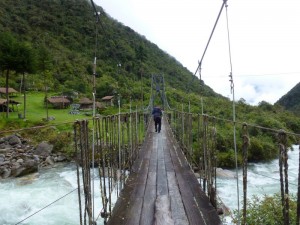
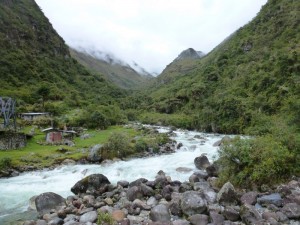
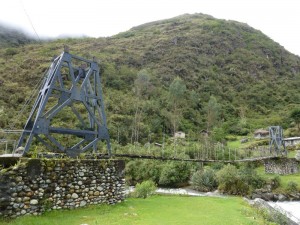
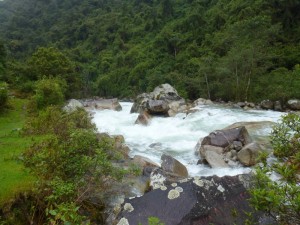
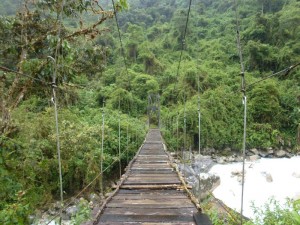
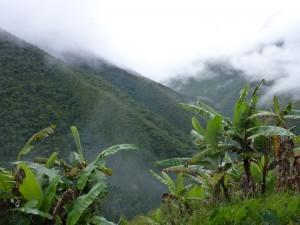
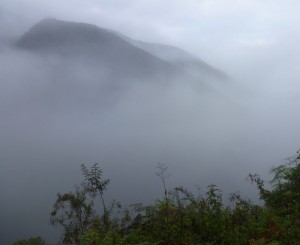

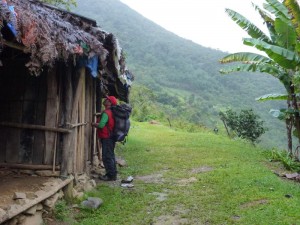
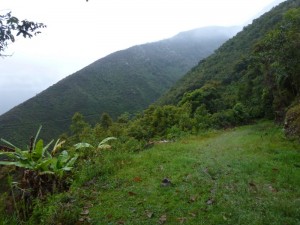

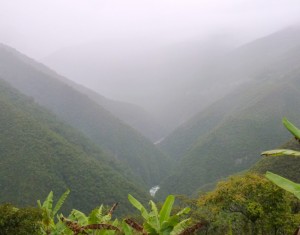
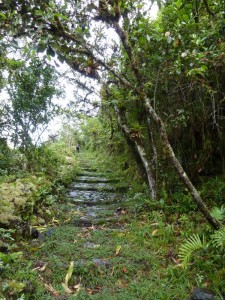
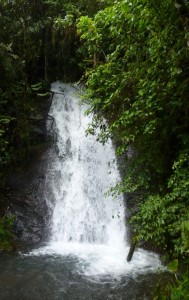
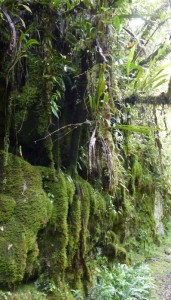
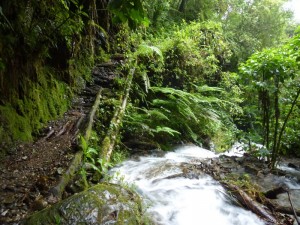
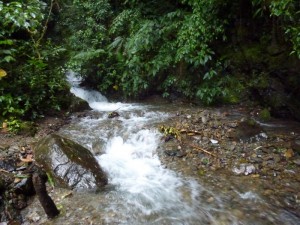
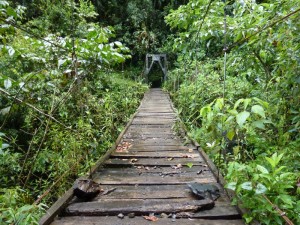
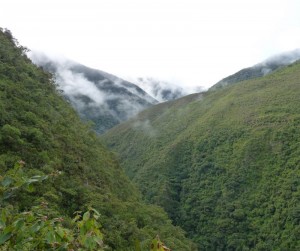
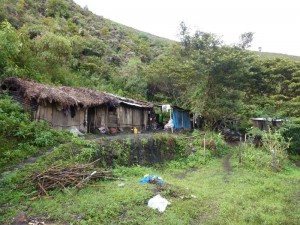
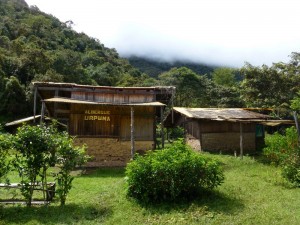
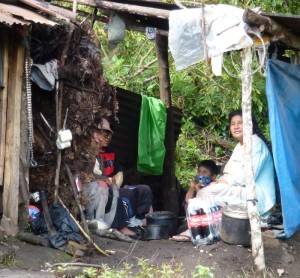
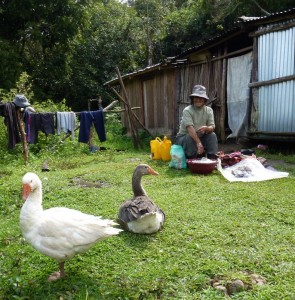
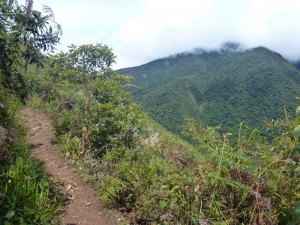
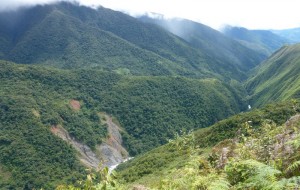
 Finally we arrived at Chairo at 2pm and the rained stopped. I brought Mario lunch and had to pay B$150 for a private car to take us to Corocio where we got a minibus to La Paz. I had the best views of the river valley and the mountains from Corocio. We left at 5pm and were back in La Paz at 8pm.
Finally we arrived at Chairo at 2pm and the rained stopped. I brought Mario lunch and had to pay B$150 for a private car to take us to Corocio where we got a minibus to La Paz. I had the best views of the river valley and the mountains from Corocio. We left at 5pm and were back in La Paz at 8pm.
















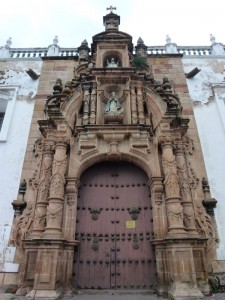




take care,i plan to take a trip to bolivia next year ,tell me more about this country,much love
Hi Sarah!
I simply loved your tour to the laguna and the rocks region. Amazing pictures!!!
I could feel the Mother Earth magnificence! If I could, what about you!!!
Take care and enjoy Bolivia!
Kamyla